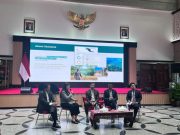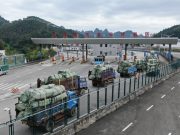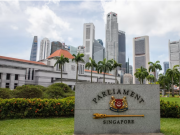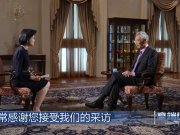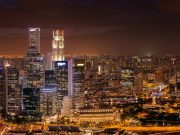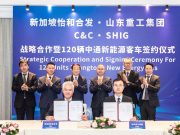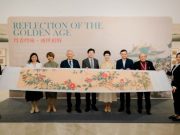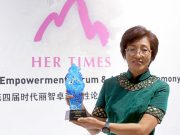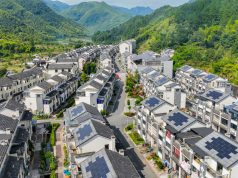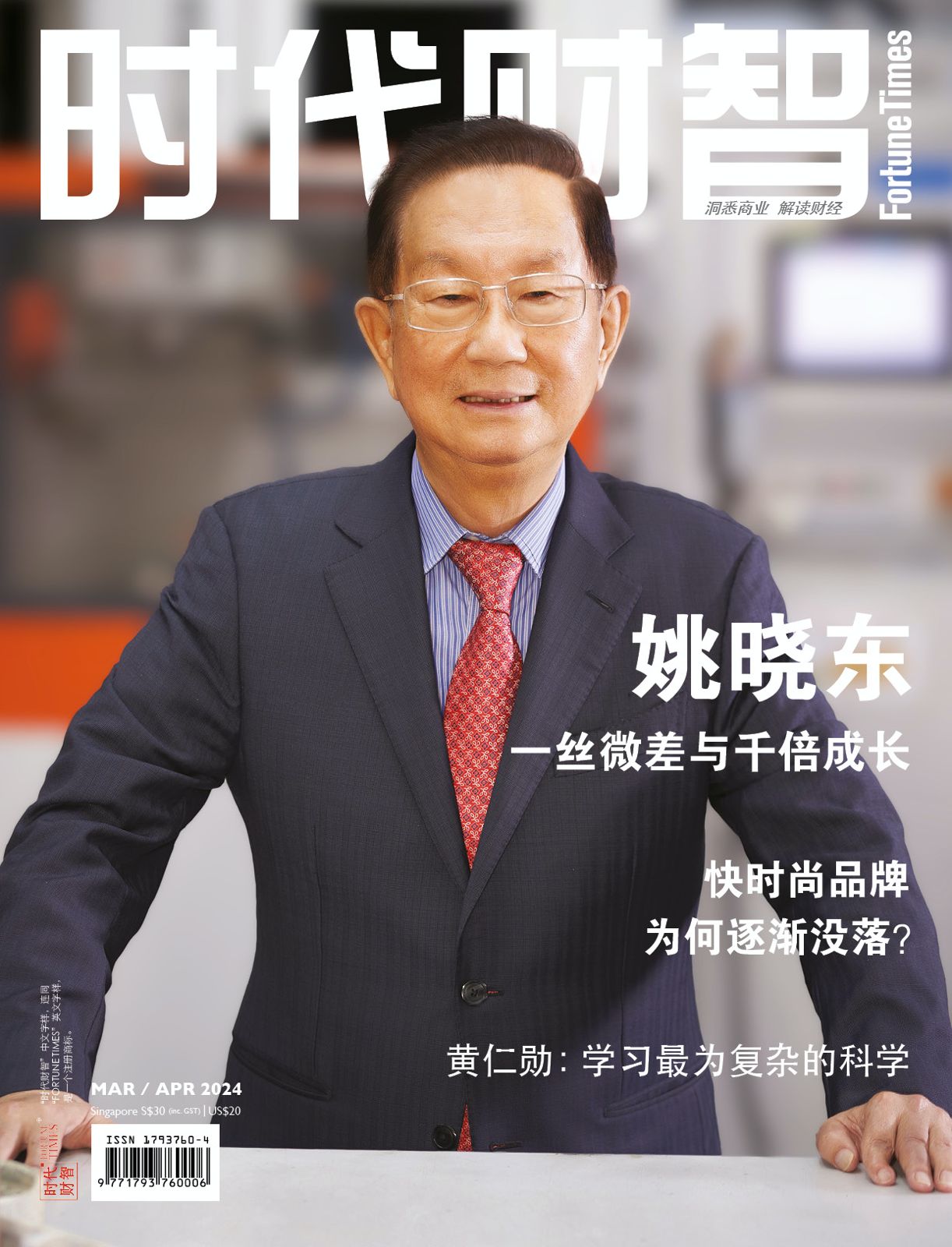China’s Economy at the Crossroads, written by the former prime minister of Australia Mr. Kevin Rudd, and the founding partner of Rhodium Groups Mr. Daniel Rosen and published on Lianhe Zaobao · Comments on June 27th, indicated that China had suspended many intended reform policies since 2013, which had resulted in serious consequences.
The article focused on analyzing the gains and losses of China’s economic reform policies in the past seven years and put forward four key points: firstly, due to China’s improper economic strategies, the country’s state-owned enterprises (SOEs) were heavily in debt. SOE reform and economic development turned out to be a failure as the law of market economy was not followed; Secondly, China’s wrong decisions at the initial stage of the fighting against the COVID-19 pandemic further worsened its increasingly deteriorated international reputation; thirdly, the national security law effected in Hong Kong violated human rights, which would result in the withdrawal of Hong Kong-based foreign enterprises; fourthly, China had not yet demonstrated its determination to achieve long-term sustained economic growth through market-oriented adjustment.
As Asia’s largest and world’s second largest economy, the rise and fall of China’s economy directly impact the prosperity and development of Asia. Without doubt, we are closely related to China’s recent economic reforms and trends. However, I’d also like to share a more macro and historical perspective on the evolution of China’s economy.
According to an ancient Chinese book titled The Theory of Salt and Iron, the disadvantages and advantages of the state-owned enterprises were not absolute and largely depended on the way of operation. Based on my observation, economic development of China today is featuring parallel operation of two economic systems and three types of capital:
- The economic system of SOEs, which is responsible for the heavy industry and large-scale infrastructure constructions, such as high-speed rails and ports, marine shipping, shipbuilding, aerospace, airports, aircraft manufacturing, oil exploitation, petrochemical and water conservancy, power generation, electric motors, power grids and heavy machinery manufacturing.
- Market-oriented economy system for private enterprises, which is responsible for light industrial products, including automobiles, electric bicycles, home appliances, mobile phones, computers, electrical appliances, small machinery, textiles and medical equipment; the service industries, including education, entertainment, telecommunications, logistics, e-commerce, commerce, banking, insurance, financial services. All are open to Chinese and foreign private enterprises.
- Foreign enterprises in China, for example, the US and Korean mobile phones and home appliances, Germany, French and Japanese automobile, medical equipment, various industrial products, textiles, sneakers, electric motors and household necessities, are all manufactured in China-based factories and can enjoy various preferential investment policies. The products can be exported and meanwhile enjoy the large market of China with a population of 1.4 billion.
China has been reputed as “world factory” and has developed the most effective and complete, cheapest and fastest supply chains in various sectors in past four decades. This is due to China’s vast territory, large population, abundant resources and large number of engineers. Today, the industrial production of the whole Vietnam is equivalent only to that of Dongguan City in Guangdong Province.
Though the Chinese economic system may be different from Europe’s and America’s in term of economic development mode, industrial structures and the involvement of private enterprises and foreign enterprises, China has its own styles and has maintained a rapid economic growth for four decades. Chinese domestic experts would described it as “a market economy with Chinese characteristics”, which proves the saying “black cat or white cat, he who catches mouse is a good cat.”
Today, the rise of China owes to its 5000 years of history to a great extent. China boasts a “strong Han dynasty and prosperous Tang Dynasty” in history. From Han and Tang Dynasty to the middle of Qing Dynasty, China had accounted for about 30% of the world’s GDP. Unfortunately, due to Empress Dowager Cixi’s closing-up policy, and Manchu government’s ignorance of the first and the second industrial revolutions, China declined and was encroached by the eight-power allied forces. After the Opium War, China had to cede territory and pay indemnities and was unable to recover for a long time. The hundred-year humiliated history has been deeply imprinted in the hearts of Chinese people. Today, it is written in the textbook of history that is a compulsory subject for Chinese students.
China Will Dominate the 4th Industrial Revolution
The first industrial revolution started in 1767 with the invention of steam engine by an Englishman called James Watt in 1767 and enabled the mechanization of production. The second industrial revolution started in 1861 with the invention of electricity by an American and enabled the electrification of the production. Both revolutions had promoted the rapid economic development in Europe and America in the 19th century and provided a strong economic strength for the later imperial and colonial countries. Starting from the 16th century, the European empires launched colonial aggression against Africa, Asia and America to seize their territories and plunder their resources. Later, China was also a victim of the aggression.
The third industrial revolution started from 1946 with the invention of micro-electronics by the Americans, which led to the derivation of digital and analog and the emergence of computer and telecommunication. In 1970s, with successful integration of analog and digital, internet came into being and portable computer and mobile phone emerged; Mobile phones were continuously upgraded from 1G to 4G. Now, China’s Huawei is taking lead in 5G technology, while Alibaba, Tencent, Baidu and other private enterprises lead the information technology business. This shows that Chinese nation is restoring its leading position in the world as the prosperous Han and Tang Dynasty did more than 2000 years ago.
Today, mankind is ushering in the fourth industrial revolutions. While the previous three industrial revolutions were based on single power technology, the fourth one involves eight technologies:artificial intelligence, new materials, new energy, quantum communication and computing, genetic engineering, nuclear fusion and blockchain. China has already topped the world in four technologies and is on par with the United States in the other four technologies.
This illustrates the effectiveness and success of China’s economic development in the past 40 years. Today, China needs the world, and the vice versa. The economic globalization in the past 70 years has been successful and beneficial to all sides. The rise of Four Asian Dragons in 1980s, the Four Tigers in the 1990s and China in 21st century indicated that the economic globalization is conducive to the economic development for most countries and regions.
It’s true that China was condemned for the wrong policies in the initial stage of fighting against COVID-19 epidemic. However, after realizing the severity of the epidemic, Beijing took extremely strict policies for quarantine and lockdown. The various data of the epidemic showed that China had brought the epidemic under control in April and its economy recovered quickly after gradual reopening in May and June. By comparing the number of confirmed cases and deaths from COVID-19 between China and the United States, we can see China was highly effective in the response to the epidemic.
A most discussed topic at present the US policy of economic deglobalization that is advocated by president Trump to isolate China, prevent China’s rise and continue to maintain its hegemony. On this account, I think it’s necessary to analyze the economic structure that China has established in the past 30 years to see whether the US strategy of containment will succeed or not.
Based on the UN industrial classification, today, only China has the industrial system with the most complete industrial and commercial categories and has the most complete and effective industrial and supply chain for industrial development. This is because China has tens of million of outstanding engineers and industrious labor force, efficient logistic system, AI-involved economic ecology, efficient government, law-ruling society and high quality education. The country has annual output of 7 million college graduates, of which, 60% are engineering graduates.
China will dominate the fourth industrial revolution in the future due to four reasons:1. China has a large domestic market with a population of 1.4 billion, of which, 300 million in the eight coastal cities have high and medium consumption capacity; 2. China has the latest and most efficient infrastructure facilities in the world; 3. China has the world’s most powerful commercial, financial and industrial talents; 4. China has the most sounding banking system.
To sum up, through 70 years’ efforts in building economic globalization system, the world’s economy has been merged into an interdependent whole. China depends on the world, just as the world depends on China. Likewise, China depends on US, just as US depends China.
In the US economic structure, the service industry accounts for 80%, while industry only accounts for 13%. The GDP of US is USD 21 trillion, of which, the industrial output is about USD 2.7 trillion, accounting for 13%. China’s GDP is USD 16 trillion, of which, the industrial output is USD 8 trillion, accounting for 50%. Obviously, the United States dominates the world’s banking sectors and US dollar is the strongest international currency, while China is superior in industry. Therefore, China and the United States are supposed to be complementary with each other and there is no need for confrontation. Economic deglobalisation is not for the benefits of mankind, nor is it workable.
Will Sino-US Confrontation Lead to Sino-US War?
Another hot topic is: whether or not the confrontation between China and the US will lead to a war.
In fact, this depends on the will of the United States. However, entrepreneurs must have risk awareness to prevent it from happening.
Since the World War II, the United States has been acting as a global sheriff. It has established multiple military bases and organized 11 aircraft carrier battle groups around the world, with annual defense expenditure of up to USD 800 billion. As a result, its national debt has reached USD 30 trillion with annual interest rates of up to USD 700 billion. The two items amount to 1.5 trillion. While being heavily laden with debts, US annual budget for national budget is almost USD 2 trillion.
China’s Economy at the Crossroads argued that Hong Kong’s National Security Law was against human rights and would lead to the withdrawal of Hong Kong-based foreign businesses. Hong Kong mainly functions as an international financial center and services as a window for foreign investment to enter the huge market of China.
If the world is optimistic of China’s economic development, Hong Kong will be needed as a window. Moreover, HSBC and SCB are currency issuers in Hong Kong. Can you image the value of this special status? In addition, many international providers of banking, insurance, finance, leasing, investment banking, funds, business accounting, consulting, lawyer, taxes and other services in Hong Kong mainly target at the potential market of mainland China and Southeast Asia. So, is it possible that these foreign businesses will withdraw from Hong Kong?
Now, many western countries that defend Hong Kong’s human rights seem to have forgotten the dark history when Britain forced China with guns and cannons to open up trade and sell opium to China. The British shall be ashamed of talking about human rights to Chinese people.
In the past year, the government of Hong Kong SAR has been remarkably restrained and tolerant for rioters and has resorted to patient persuasion in face of their violence. Policemen put up with rioters even when they were attacked, and public facilities and economy have been severely damaged. Hong Kong was compelled to implement the national security law, which has been widely welcomed by the society.
In the United States, on the contrary, when colored people demonstrated in the streets to protest against racial discrimination, Trump described them as rioters and mobilized military police to suppress them on the sixth day into the demonstration. However, “the men in black” who attacked the police and set fire to hurt people in demonstrations in Hong Kong were hailed as “fighters for freedom” by US authority. The double standards and the hypocrisy of Western countries are astounding and outrageous.
The article concluded by suggesting that China should better follow the operating mode of capitalism market in the western countries to keep on. I’m not worried about that at all. Chinese people are good at learning. As Confucius said, “of the three companies, one will be my teacher”. In 1987, Deng Xiaoping decided that the first step of the opening up policy was to send more than 30,000 college students to study in western countries. Since then, an annual average of 600,000 students had gone to study abroad, with the total number of students studying abroad amounting to more than 10 million in the past 30 years. However, Trump’s saying that Chinese people had stolen their technology sounds quite illogical.
Anyway, Chinese people should acknowledge the contributions of western educators to China and should also take the advice of Kevin Rudd and Daniel Rosen to learn from the west.
The author is the founder of Indonesia Lippo Group


